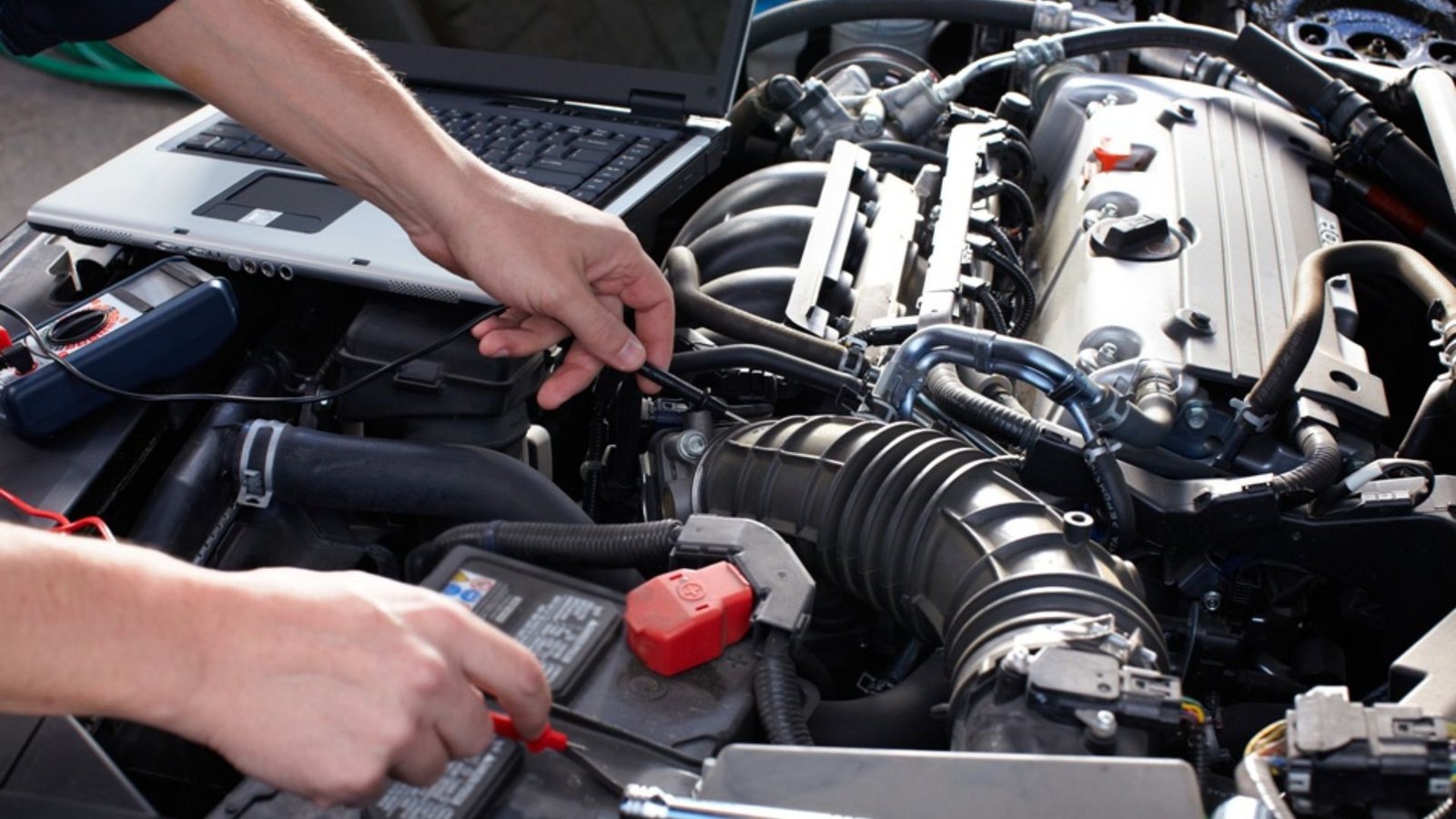Engine tuning is a critical process for optimizing vehicle performance, involving adjustments to various engine parameters to achieve better power, efficiency, and responsiveness. Understanding the science behind engine tuning can help you appreciate how these adjustments impact your vehicle’s performance. Here’s a deep dive into the principles, benefits, and methods of engine tuning.

1. Understanding Engine Tuning
1.1 What is Engine Tuning?
Overview: Engine tuning involves modifying the engine’s settings to enhance its performance characteristics. This can include adjustments to fuel delivery, ignition timing, and air intake.
How It Works:
- Parameter Adjustments: Changes are made to the engine control unit (ECU) to optimize various parameters.
- Goal: The aim is to improve power output, fuel efficiency, and overall engine responsiveness.
Benefits:
- Enhanced Performance: Results in a more powerful and responsive engine.
- Improved Efficiency: Can lead to better fuel economy and lower emissions.
Drawbacks:
- Complexity: Requires knowledge of engine mechanics and tuning principles.
2. Key Principles of Engine Tuning
2.1 Air-Fuel Ratio (AFR)
Overview: The air-fuel ratio is the proportion of air to fuel in the combustion chamber. Proper tuning ensures an optimal AFR for efficient combustion.
How It Works:
- Stoichiometric Ratio: The ideal AFR for gasoline engines is around 14.7:1 (14.7 parts air to 1 part fuel).
- Adjustments: Tuning adjusts the AFR to ensure complete combustion and prevent issues like knocking or poor fuel efficiency.
Benefits:
- Efficient Combustion: Ensures that the engine burns fuel efficiently, improving power and economy.
- Reduced Emissions: Proper AFR helps in reducing harmful emissions.
Drawbacks:
- Fine-Tuning Required: Needs precise adjustments to avoid engine problems.
2.2 Ignition Timing
Overview: Ignition timing refers to the moment the spark plug ignites the air-fuel mixture in the cylinder. Proper timing is crucial for optimal engine performance.
How It Works:
- Advance Timing: Adjusting the timing so the spark occurs earlier can increase power but may cause knocking if not properly managed.
- Retard Timing: Delaying the spark can improve fuel efficiency but may reduce power.
Benefits:
- Enhanced Power: Proper timing can maximize engine power and responsiveness.
- Improved Efficiency: Helps in achieving better fuel economy.
Drawbacks:
- Knocking Risk: Incorrect timing can lead to engine knocking and reduced performance.
2.3 Boost Levels
Overview: Boost levels refer to the amount of pressure added to the engine’s intake air by a turbocharger or supercharger.
How It Works:
- Increased Air Density: More air pressure means more air and fuel can be burned, increasing power.
- Control: Tuning the boost levels ensures optimal performance and avoids engine damage.
Benefits:
- Higher Power Output: Provides a significant boost in horsepower.
- Enhanced Performance: Improves acceleration and overall engine dynamics.
Drawbacks:
- Heat and Stress: Higher boost levels can increase engine temperature and stress.
3. Methods of Engine Tuning
3.1 ECU Remapping
Overview: ECU remapping involves modifying the engine control unit’s software to change how the engine operates.
How It Works:
- Software Changes: Adjusts parameters like fuel maps, ignition timing, and boost control within the ECU’s programming.
- Customization: Can be tailored to specific performance goals or driving conditions.
Benefits:
- Customizable: Allows for precise tuning to meet specific performance needs.
- Enhanced Performance: Can significantly improve power and efficiency.
Drawbacks:
- Professional Required: Often requires professional expertise for optimal results.
3.2 Performance Chips
Overview: Performance chips are aftermarket modules that modify the ECU’s parameters to improve performance.
How It Works:
- Plug-and-Play: Typically installed by plugging the chip into the vehicle’s OBD-II port.
- Pre-Programmed: Comes with pre-set performance enhancements for easy installation.
Benefits:
- Easy Installation: Simple to install and remove without extensive modifications.
- Performance Gains: Provides immediate improvements in power and efficiency.
Drawbacks:
- Less Customization: Limited in terms of customization compared to ECU remapping.
3.3 Upgraded Components
Overview: Upgrading engine components such as the air intake, exhaust system, and fuel injectors can enhance performance.
How It Works:
- Enhanced Flow: Better air and fuel flow components can improve combustion efficiency.
- Performance Parts: High-performance parts can handle more power and increase engine output.
Benefits:
- Improved Efficiency: Upgraded parts can boost performance and fuel economy.
- Increased Power: Can result in significant power gains.
Drawbacks:
- Cost: Performance parts can be expensive.
- Compatibility: Upgrades must be compatible with the engine and other modifications.
4. Benefits of Engine Tuning
4.1 Enhanced Performance
Overview: Engine tuning can lead to increased horsepower, torque, and overall performance.
Benefits:
- Better Acceleration: Improves the vehicle’s responsiveness and speed.
- Smoother Operation: Can result in a more refined driving experience.
4.2 Improved Fuel Efficiency
Overview: Proper tuning can optimize fuel delivery and combustion, leading to better fuel economy.
Benefits:
- Cost Savings: Reduced fuel consumption can lower driving costs.
- Environmental Impact: Improved efficiency helps in reducing emissions.
4.3 Customization
Overview: Tuning allows for customization based on individual driving needs and preferences.
Benefits:
- Tailored Performance: Adjust settings to match driving style or specific performance goals.
- Enhanced Driving Experience: Personalizes the vehicle to suit individual needs.
5. Considerations and Risks
5.1 Warranty Concerns
Overview: Modifying the engine can potentially void the manufacturer’s warranty.
Considerations:
- Warranty Impact: Check with the manufacturer before making significant modifications.
- Professional Installation: Ensure modifications are done by professionals to minimize warranty issues.
5.2 Maintenance and Reliability
Overview: Engine tuning can affect long-term reliability and maintenance requirements.
Considerations:
- Increased Wear: Higher performance levels may lead to increased wear and tear.
- Regular Maintenance: Ensure regular maintenance to keep the engine in good condition.
Conclusion
Engine tuning is a sophisticated process that can significantly enhance your vehicle’s performance and efficiency. By adjusting parameters like air-fuel ratio, ignition timing, and boost levels, tuning optimizes your engine for better power, fuel economy, and driving dynamics. Methods such as ECU remapping, performance chips, and component upgrades offer various ways to achieve these improvements. However, it’s important to consider potential impacts on warranty, maintenance, and reliability. With proper tuning and professional expertise, you can enjoy a more powerful and efficient driving experience.




